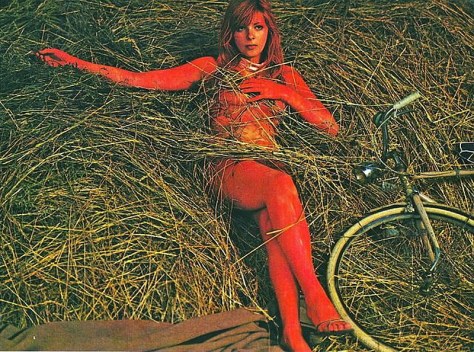
Format: Cinema
Release date: 27 February 2015
Distributor: Icon Film Distribution
Director: David Robert Mitchell
Writer: David Robert Mitchell
Cast: Maika Monroe, Keir Gilchrist, Lili Sepe, Daniel Zovatto, Olivia Luccardi
USA 2014
97 mins
One of the highlights of the 20th Etrange Festival, which took place in Paris in September, was undoubtedly David Robert Mitchell’s follow-up to his well-received debut, The Myth of the American Sleepover. Impressively controlled and intelligently written, It Follows revolves around a simple, strong and horribly effective concept, which is neatly stated in a title that is both disarmingly concrete and rich in ramifications.
Following a sexual encounter with a boy she likes during the summer, 19-year-old Jay starts having nightmarish visions of ominous ghostly figures who follow her relentlessly. Warned not to let them touch her, Jay is continually forced to run from the incomprehensible menace, invisible to everyone else, or attempt to pass on the haunting by sleeping with someone. With the help of her sister Kelly and their friends, Jay desperately tries to find a way of ridding herself of the ghoulish infection.
Deliberately paced, the film weaves an atmosphere of inescapable dread around the characters, making unnerving use of 360-degree pans that almost casually reveal the slowly but inexorably approaching threat, brilliantly complemented by the Carpenter-style soundtrack. The locations are perfectly chosen, from the eerily empty, impeccably groomed suburban streets, only briefly troubled by a flimsily dressed girl running in fear, to a gloomy Gothic swimming pool where the friends will try to eliminate Jay’s ghost.
Normally out of bounds to the teens, the derelict swimming pool on the other side of the tracks stands in contrast to the sanitised suburbia of their homes: it is there that they will face the hideous consequences of sex. Like the best horror films, It Follows does not explicitly spell anything out, but instead plunges its audience into the prevailing mood of its time, creating an atmosphere of terror where having sex is never any fun, reduced to a fearful act performed solely with the aim of getting rid of the ghostly affliction. That pervading, consuming anxiety is economically planted in our minds in the opening sequence, the only gory scene in this masterfully restrained film. That the house number of the unfortunate first victim should be 1492 makes it clear from the start, in a similarly understated manner, that this is a film about America.
The world of It Follows is exclusively peopled by teenagers: adults play no role in fighting the threat and the youthful gang are left to their own devices in trying to understand what is happening. This adds to the sense of claustrophobia and tension, but the sense of adult disengagement may well also be part of Mitchell’s quietly damning observations. An unsettling horror tale and a chilling appraisal of contemporary American mores, It Follows is an accomplished modern gem of fantastical cinema.
Virginie Sélavy










